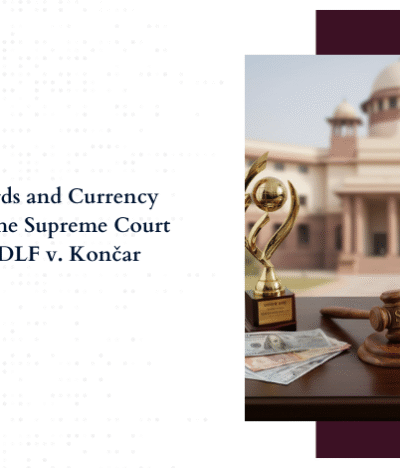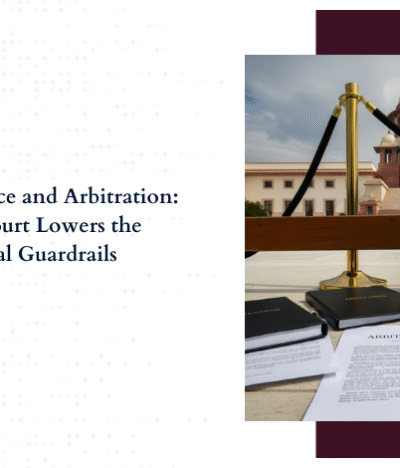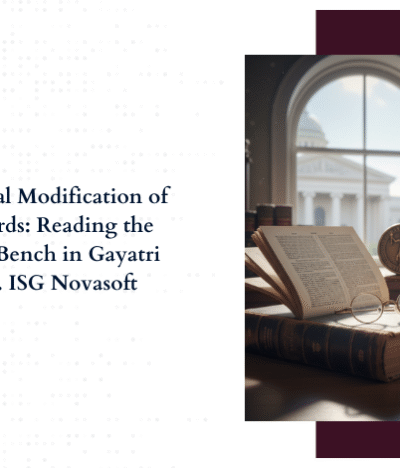What Really Happens When a Cheque Bounces
A dishonoured cheque in India triggers two distinct but often parallel pathways: a criminal complaint under Section 138 of the Negotiable Instruments Act, 1881 and a civil action to recover money (including a summary suit under Order 37 CPC). The criminal track exists to deter defaults and can lead to imprisonment and/or fine; the civil track is about decree and execution to actually get your money back. Understanding how—and when—to use each pathway is the difference between a fast, enforceable outcome and months lost to procedure.
A Section 138 offence is bailable, compoundable and non-cognizable, which means no arrest without warrant, the case can be settled at any stage, and punishment is oriented toward deterrence and compensation. This criminal mechanism sits alongside your civil remedies; it does not replace them.
Courts also place a statutory presumption in favour of the payee: once issuance and signature are admitted, the law presumes the cheque was issued for a legally enforceable debt or liability (Sections 118(a) and 139 NI Act). The accused can rebut this on a preponderance of probabilities, but the starting point helps the complainant. This presumption—crafted to strengthen cheque credibility—has been repeatedly affirmed by the Supreme Court.
1. Statutory Framework — Criminal vs Civil
A. Criminal route: Section 138 NI Act (cheque bounce offence)
What amounts to an offence: Dishonour of a cheque “for insufficiency of funds” (or exceeding arrangement) becomes an offence only if you comply with the statute’s demand-notice and timeline steps.
Penalty: imprisonment up to two years and/or fine up to twice the cheque amount.
Timeline:
- Present the cheque within its validity—3 months from date of cheque (RBI direction effective 1 April 2012).
- Receive bank memo of dishonour (Section 146 presumes the memo proves dishonour).
- Send a written demand notice within 30 days of receiving the memo (proviso (b) to S.138 read with S.142).
- Wait 15 days from drawer’s receipt of notice; if unpaid, cause of action arises the next day. File the complaint within one month thereafter (S.142(b); delay can be condoned).
Where to file (territorial jurisdiction): If the cheque is deposited through your bank account, file where your bank branch is situated; if presented otherwise, file where the drawer’s drawee bank branch is located.
IBC overlap: If the drawer is a corporate debtor under moratorium (S.14 IBC), Section 138/141 proceedings against the corporate debtor are stayed (but not against natural-person signatories).
B. Civil route: Money recovery (including Order 37 CPC summary suits)
What it does: A civil action aims at decree and execution—attachment, garnishee, etc.—so you actually realise money. Order 37 CPC gives a fast-track “summary” procedure for negotiable instruments and other liquidated claims.
Why it’s faster than an ordinary suit: The defendant must seek leave to defend; if the defence is frivolous/sham, the court can refuse leave and pass summary judgement.
Limitation: Most money-recovery claims (including those founded on cheques/written contracts) carry a three-year limitation under the Limitation Act, 1963 (see Schedule).
C. Quick side-by-side
Issue | Criminal (S.138 NI Act) | Civil (Order 37 / regular suit) |
| Objective | Deterrence + compensation | Recovery/decree & execution |
| Timelines | Strict statutory steps: 3-month validity → 30-day notice → 15-day wait → 1-month to file | 3-year limitation (generally) |
| Forum | Magistrate having S.142(2) jurisdiction | Civil court with pecuniary/territorial jurisdiction |
| Interim money | Up to 20% interim compensation (S.143A); ≥20% appellate deposit (S.148) | Conditional leave/deposits possible under Order 37 |
| Settlement | Compoundable any stage (S.147; Damodar S. Prabhu costs) | Compromise decree under CPC |
| Insolvency impact | Stayed against corporate debtor during IBC moratorium (P. Mohanraj) | Subject to IBC/Companies Act processes at execution stage |
Can civil and criminal run together?
Yes—and they should, tactically.
The Supreme Court has been clear: civil and criminal proceedings can proceed simultaneously; neither judgement is automatically binding on the other, and the standards of proof differ. Practically, you file Section 138 NI Act for leverage and Order 37 for a decree you can execute. Use the momentum of the criminal case to settle on civil terms that actually pay.
Corporate & Vicarious Liability
A. The gateway rule under Section 141 NI Act
When the drawer is a company/firm, criminal liability for cheque dishonour attaches first to the entity. Others (directors/partners/officers) can be prosecuted vicariously only if the complaint shows they were “in charge of and responsible for the conduct of the business” when the offence occurred. The Supreme Court’s Aneeta Hada clarifies that arraigning the company/firm is ordinarily mandatory to trigger vicarious liability.
B. Who can be prosecuted (and on what footing)
- Managing Director / Joint Managing Director: by virtue of office, courts presume they run the day-to-day business; they must then show lack of knowledge/due diligence to escape liability.
- Authorised signatory of the cheque: ordinarily liable (even if not MD/JMD) because signing the instrument directly connects them to the offence; this fits Section 141(2) (consent/connivance/negligence).
- Other directors/officers: mere designation is not enough. The complaint must specifically plead how each was in charge and responsible for the company’s business at the material time.
C. What a legally sound complaint must say (the “averment” test)
A bald, copy-paste line that “X is a director and responsible” will not do. The Supreme Court has reiterated that Section 141 is penal and must be strictly construed; without concrete facts showing how and in what manner the person managed the company’s affairs, proceedings against that person are liable to be quashed.
D. Partnerships and LLPs
The firm/LLP stands in the shoes of a “company” for Section 141. Partners are not automatically criminally liable; the firm must be arraigned, and the complaint must state each partner’s role and responsibility at the relevant time.
E. Civil vs criminal exposure for promoters/directors/partners (don’t conflate)
- Criminal (Section 141): vicarious liability is exceptional and strictly pleaded; it flows from the company/firm’s offence and hinges on role-based averments.
- Civil (money recovery): a company is primarily liable for its debts; a director is not personally liable unless there is a personal guarantee/independent cause of action. In contrast, under the Indian Partnership Act, 1932, Section 25, partners are jointly and severally liable for the firm’s acts—so a civil decree can be executed against any/all partners for firm debts.
Conclusion
Cheque dishonour in India is not a single-lane problem. It is a dual-track system where criminal liability under Section 138 of the NI Act creates pressure through presumptions, timelines, interim compensation, and the prospect of conviction, while civil liability (especially via Order 37 CPC) is what ultimately gives you a decree you can execute against assets and receivables.
The smartest course is rarely “either/or.” It is to run both tracks in a coordinated way: send a precise statutory demand, file the Section 138 complaint within time, and, in parallel, institute a well-documented summary suit for money recovery.
In short: treat criminal vs civil liability not as rivals but as tools in a single, deliberate plan to vindicate the debt with speed, legality, and leverage.






